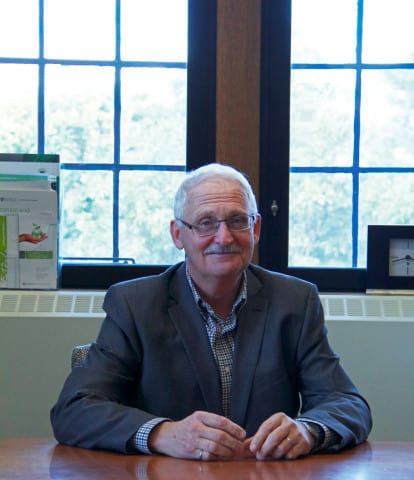JD BELL

Ernie Barber (above) and Gordon Barnhart’s address to the U of S was inadequate for Aboriginal needs.
The University of Saskatchewan spent the 2013–14 academic year implementing ill thought-out budget cuts throughout our university in a seemingly indiscriminate fashion, which included cutting student programming, firing staff and various other measures.
After laying off many university staff members, the U of S will be filling many of those fired workers’ positions with Aboriginal staff to increase the Aboriginal workforce representation — a move that history proves will likely cause a negative public backlash towards Aboriginal people on and off campus.
On Sept. 9, the university’s interim-president Gordon Barnhart and interim-provost Ernie Barber addressed our campus community to discuss the priorities of action this year. The first goal Barber stated was “to speed up the delivery on our commitment to Aboriginal engagement, including a representative workforce… The priority of Aboriginal engagement has been with us through three integrated plans. We have to make sure we continue to make progress and accelerate that.”
The university’s Aboriginal workforce representation is around five per cent, however, Saskatchewan’s Aboriginal population is over 15 per cent. This means Aboriginal people are hired at a much lower rate than non-Aboriginal people at the U of S and subsequently, the university plans to set targets to hire more Aboriginal staff to address this serious issue.
While the U of S Aboriginal engagement strategy sounds admirable, the real world is often wrought with unintended consequences. Marie Battiste, an educational foundations professor at the U of S stated, “Whenever we put forward an Aboriginal target — whether it’s for students, whether it’s for workforce, whether it’s for education — in the provinces, there is always a backlash; backlashes that are aimed at Aboriginal people.”
“As we look at the kinds of losses that have been made at this university towards losing people across the board… and now we replace them with Aboriginal people, there will be [backlash] for Aboriginal people,” Battiste said.
After reminding Barnhart of the backlash Aboriginal people will encounter, Battiste asked, “How are you going to manage that kind of discrimination, backlash and racism that will be endemic to such a plan that you are putting forward?”
To answer this question, Barnhart welcomed Heather Magotiaux, vice-president of advancement and community engagement, to the podium. The answer given is as lazy, unprofessional, confusing and harmful as the approach is.
“I think certainly things like the safety disclosure mechanisms that are in place. I think that things like the harassment and discrimination policies, taking that really seriously and making sure that we respond to issues when they arrive will be really important,” Magotiaux said.
Let me restate Magotiaux’s confusing response in layman’s terms for you: the U of S will do nothing to mitigate potential backlash and resentment Aboriginal people will face as a result of the university’s workforce representation targets.
If the university’s workforce representation policies cause even the smallest morsel of public resentment directed towards Aboriginal people off-campus, the university may not even find out — which means the university will not be able to “respond to issues when they arrive” like Magotiaux suggested.
Relying on reactionary measures instead of taking a responsible and proactive approach to protect the people that the university’s policies will put in harm’s way conveys the U of S’ true priorities — as the 19th century American politician James W. Frick stated, “Don’t tell me where your priorities are. Show me where you spend your money and I’ll tell you what they are.”
When the university chooses to spend absolutely no time, effort, or resources on protecting the people its policies will directly affect, it becomes easy to see that the safety and protection of Aboriginal people is not a priority for the U of S.
We deserve more from an institution that places Aboriginal engagement on its prioritized action list. And let’s not forget the U of S has the financial capacity to develop meaningful strategies to mitigate harm, because as Barnhart pointed out, the U of S has an operating budget of $1.1 billion per year.
With the university’s lack of resources devoted to mitigating this potential harm, the U of S will spend more money supplying toilet paper on-campus for a single day than protecting Aboriginal people from any public fallout from these policies — and will be responsible for any public backlash resulting from them.
—
Photo: Katherine Fedoroff/Photo Editor